

EXCELLENTTrustindex verifies that the original source of the review is Google. If you are suffering from stubborn plantar wart, I highly recommended Dr. Bhela. He made a stubborn plantar wart that I had for 1 year finally gone after 3 months with SWIFT treatment. I highly recommended SWIFT for plantar wart. The staff was amazing and helpful with scheduling. Overall, I had wonderful experience at Restore Podiatry.Posted onTrustindex verifies that the original source of the review is Google. My experience with Dr Behla was great. Very knowledgeable, took care of my issue in one visit. I went to multiple doctors without any progression. Highly recommend him!Posted onTrustindex verifies that the original source of the review is Google. Dr.Bhela is very professional and detailed at getting results. I Had a great experience at Restore Podiatry and Laser center. Stop spending your money with over the counter ointments that just don’t work. For stubborn nail fungus you need to see a professional to rid yourself of it. Hot laser or cold laser is painless and you will definitely see the results you want spend the money the right way the first time around.Posted onTrustindex verifies that the original source of the review is Google. Dr. David Bhela in Hicksville NY , helped reduce my calluses in less than a month! Super professional, kind, and knowledgeable. Highly recommend!Posted onTrustindex verifies that the original source of the review is Google. Dr. Bhela is a great doctor who is very knowledgeable and helpful. He cares for his patients and you will find that out for yourself if you visit him! He has helped me a lot with my feet and I couldn’t be more thankful. He definitely gets my personal recommendationPosted onTrustindex verifies that the original source of the review is Google. Dr.Davinder Bhela clearly explained treatment options and time frame to expect for visits to treat plantar fascia pain and discomfort. He provided top notch care, very good exercise recommendations for improving muscle tone, plus Dr. Bhela is very kind and friendly. I'm very glad to have worked with him for my care and continued health journey.Posted onTrustindex verifies that the original source of the review is Google. Very good service. Friendly staff and very professional. Highly recommend



Many people are embarrassed to show their crumbling and discolored toenails. Toenail fungus infections are very common and can be quite unsightly. However, there are treatment options that ensure this infection is removed. One of these treatment options is laser treatment. It is a new and promising treatment option that totally eliminates toenail fungus. Laser therapy was first developed in 2009 for treating toenail fungus.
For individuals who have tried everything from topical antifungal, oral medication, home remedies or creams, laser treatment is an excellent option. Laser therapy uses light energy to destroy toenail fungus.
In this blog, we will explore various laser treatments so individuals can properly understand the best laser treatment for toenail fungus and the right type of laser therapy.
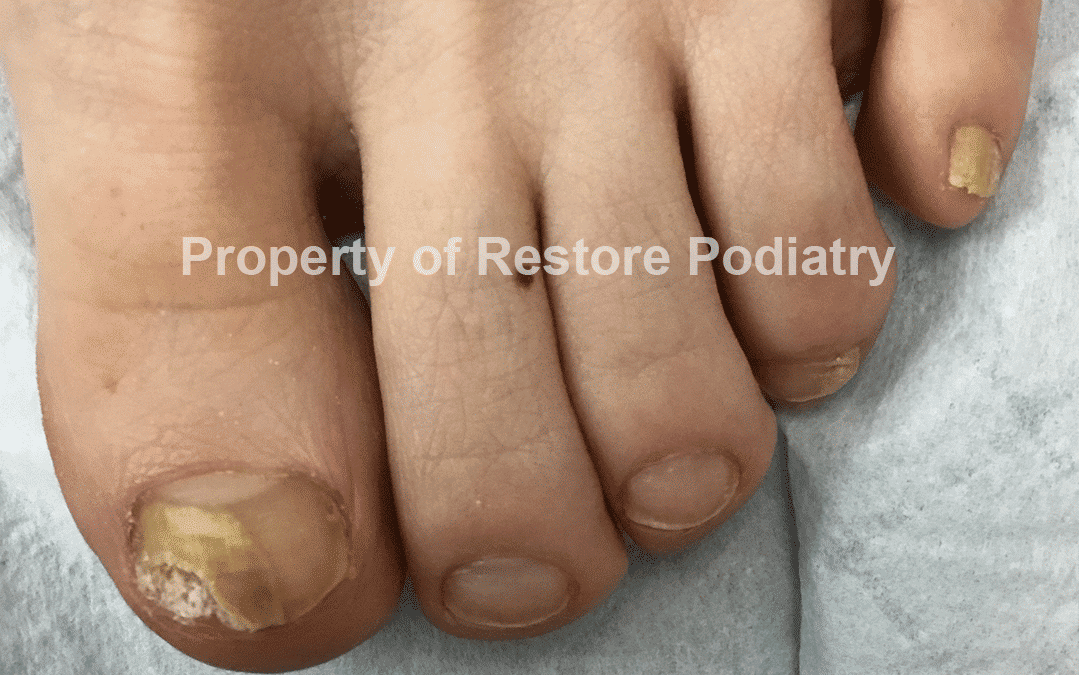

How?: “I think from nail salon”
Duration of Infection: 3 Years
Diagnosis: 90% Onychomycosis
Fungal Test Infection: Positive
Toenail fungus doesn’t go away on its own. When left alone, it can get worse and even cause further damage to toenail and toenail becomes thickened and discolored. Therefore, it must be treated completely, and if left untreated, you can spread toenail fungus to other’s toenails both directly and indirectly.
Many patients try creams or oral medications, but these treatments often come with side effects (like liver damage or drug interactions), long treatment times, or simply don’t work well. Topical solutions rarely penetrate the nail deep enough to kill the fungus at its source. This leads to frustration and recurring infections.


How? :”I had an ingrown toenail removal surgery, my nail bed was exposed, picked up fungus afterward”
Duration of Infection: 5 Years
Diagnosis: 50% Onychomycosis
Fungal Test Infection: Positive
Treatment Duration: August 2019 – December 2019
Laser light is pointed at the toenail, which passes through the nail and gets to the fungal infection beneath it. The laser eliminates the fungus that causes the infections and returns the nail to normal thickness and color. However, please note that you might require several treatments, and the results might not be visible immediately. You can read further on toenail fungus treatment with laser on the National Library of Medicine website.
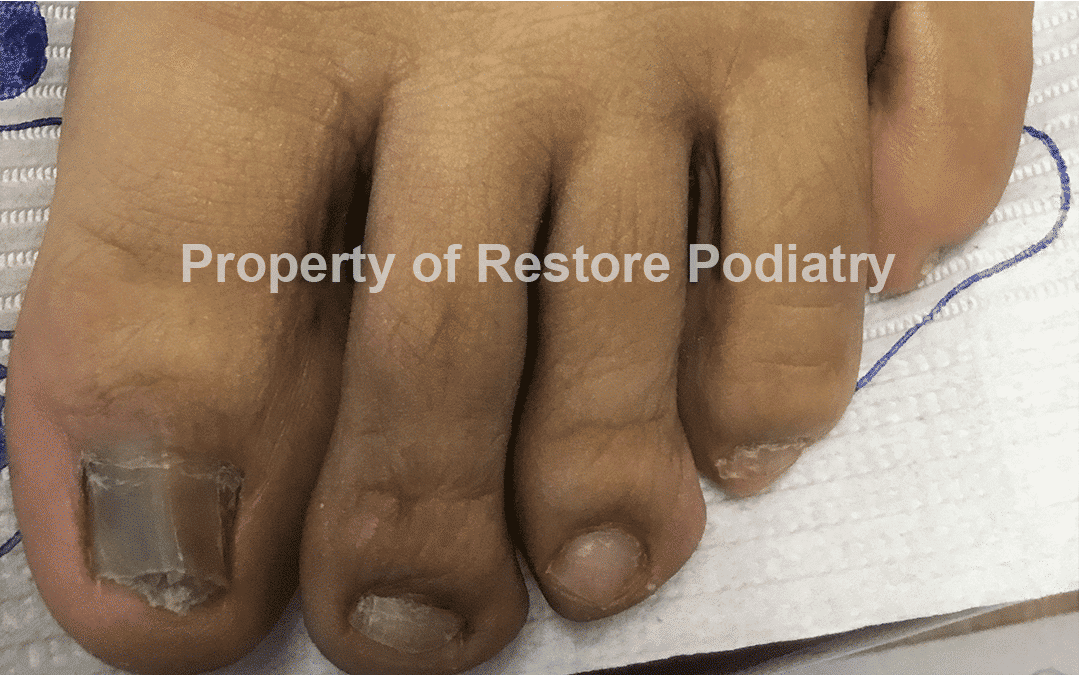
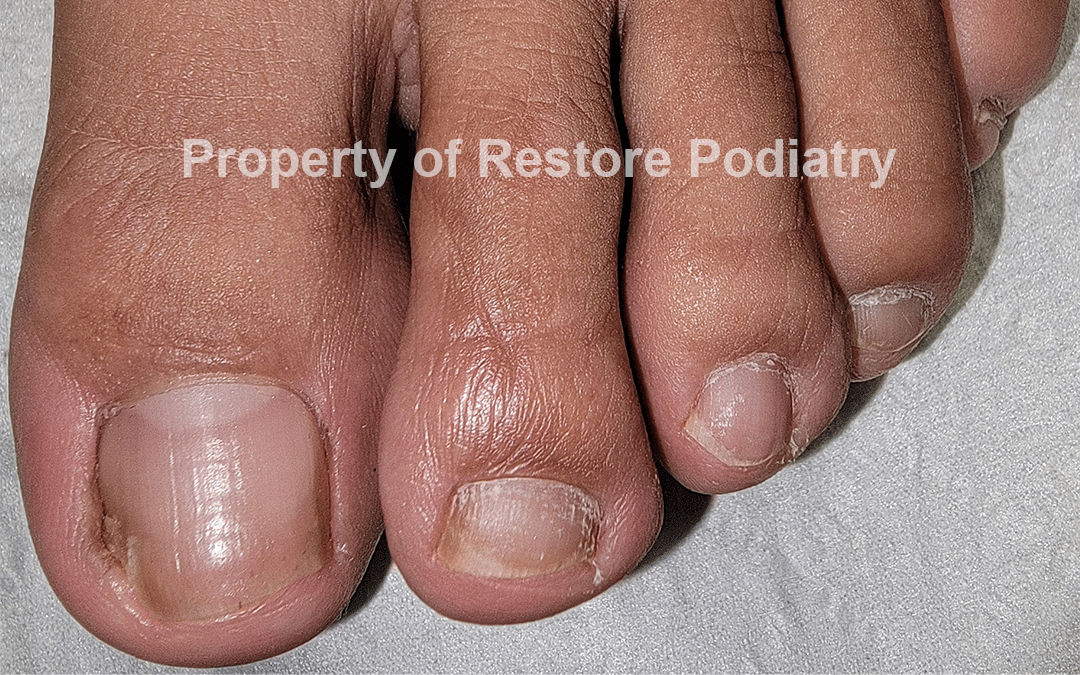
How?: “From walking barefoot in damp public area”
Duration of Infection: 6 years
Diagnosis: Total Onychomycosis
Fungal Test Infection: Positive
Treatment Duration: February 2023 – July 2023
Two most common types of laser treatment effectively eliminate toenail fungus. They are hot laser treatment and cold laser treatment. The hot laser treatment bypasses the nail and creates heat at the injection site under the nail plate. This destroys the fungal cells before they reach the healthy cells, which are pain-free. Usually, what most individuals feel is a warm sensation on their toes.
On the other hand, the cold laser treatment simultaneously directs two low-level beams to the nails, damaging the fungus and clearing the infection. Since the beams don’t generate heat, they are called cold lasers. Hence, the treatment is pain-free, safe, and does not have side effects. Let’s look at some types of laser treatments used to treat toenail fungus.

Type: Class 2 Laser Therapy / Cold Laser Therapy
Lunula cold laser therapy was first introduced in 2012 on the market and received FDA-cleared in United States in June 2016. Lunula Laser is a non-invasive, low-level laser specifically designed to treat toenail fungus safely and effectively—without pain or downtime. Unlike hot lasers or oral antifungals, Lunula uses dual-wavelength cold laser light to:
The Lunula Laser uses two specific wavelengths of light:
635nm red laser: Stimulates the immune system and increases blood flow to help the body fight off the fungal infection.
405nm violet laser: Directly targets and kills the fungal pathogens in the nail bed.
These lasers work together in a synergistic way—enhancing the body’s natural healing processes while also destroying the fungus at its source.
There are no side effects, downtime, or discomfort associated with this laser. Each session typically lasts about 12 minutes per foot, and a full course of treatment may require several weekly sessions. Because the laser works beneath the nail, results appear gradually as the nail grows out.

Type: Hot Laser (Nd:Yag 1064 nm)
The PinPointe Laser is an FDA-approved thermal laser in 2009 that features a non-contact temperature sensor. It is First FDA-cleared laser for toenail fungus; widely used.
The Problem:
Small spot size 1.5 mm (the laser light is the size of pencil dot) which can lead to missing certain spots on toenail, no distance sensor, no temperature monitoring, cannot penetrate thick toenail and can cause mild discomfort. Multiple treatments may still be needed.
The Nd:Yag Laser targets the fungus with a focused beam of light, which kills the fungus and clears up the infection. This 1064nm energy laser can penetrate through the nail and heat the fungus underneath the nail without damaging the nail or surrounding tissue. It features a handpiece with a non-contact temperature sensor that monitors the temperature of the treatment area to prevent burns. Two aiming beams on the handpiece ensure consistency in treatments by maintaining the proper distance between the handpiece and the skin.
The treatment is typically done in a series of three or four sessions, spaced about four to six weeks apart. You can expect very little or no discomfort during the procedure, and there is no downtime afterward. The majority of people only feel a slight warmth. You can, however, take a break if it becomes painful in any way. And, you will not require pain medication or topical treatments either.
The number of treatments needed varies from person to person, but most people need a minimum of three treatments. Your nails will not show an instant improvement in appearance. The new nail growth, however, should be clear and healthy as the fungus grows out.

Type: Hot Laser (Nd:Yag 1064 nm)
The Cutera Genesis is an FDA-approved thermal laser that features a non-contact temperature sensor. It is FDA approved. This Cutera Genesis laser is the most powerful laser available for treating fungal toenails.
How it works:
The Genesis laser targets the fungus with a focused beam of light, which kills the fungus and clears up the infection. This 1064nm energy laser can penetrate through the nail and heat the fungus underneath the nail without damaging the nail or surrounding tissue. It features a handpiece with a non-contact temperature sensor that monitors the temperature of the treatment area to prevent burns. Two aiming beams on the handpiece ensure consistency in treatments by maintaining the proper distance between the handpiece and the skin.
The treatment is typically done in a series of three or four sessions, spaced about four to six weeks apart. You can expect very little or no discomfort during the procedure, and there is no downtime afterward. The majority of people only feel a slight warmth. You can, however, take a break if it becomes painful in any way. And, you will not require pain medication or topical treatments either.
The number of treatments needed varies from person to person, but most people need a minimum of three treatments. Your nails will not show an instant improvement in appearance. The new nail growth, however, should be clear and healthy as the fungus grows out.
Pros:
3x more effective than PinPointe due to larger spot size (covers more nail and reduces missing certain spots)
Temperature monitoring ensures safety and consistent results
More comfortable with fewer risks of overheating
Type: Hot Laser (Class 4 Laser Therapy 980 nm)
The Remy Laser is an FDA-cleared laser device that uses targeted light energy to treat fungal infections in toenails. It’s a quick and painless outpatient procedure that penetrates the nail plate and destroys the fungus beneath without harming the surrounding skin or tissue.
Once the laser light touches the nail, photons (particles of light) penetrate through and “attack” the fungal colony and bacteria without damaging healthy tissue.
When our body’s cells absorb the light, studies have shown accelerated cell growth, and increased neutrophils (white blood cells that fights infections.) These white blood cells create a crucial line of defense against dermatophytes that cause fungal infections.

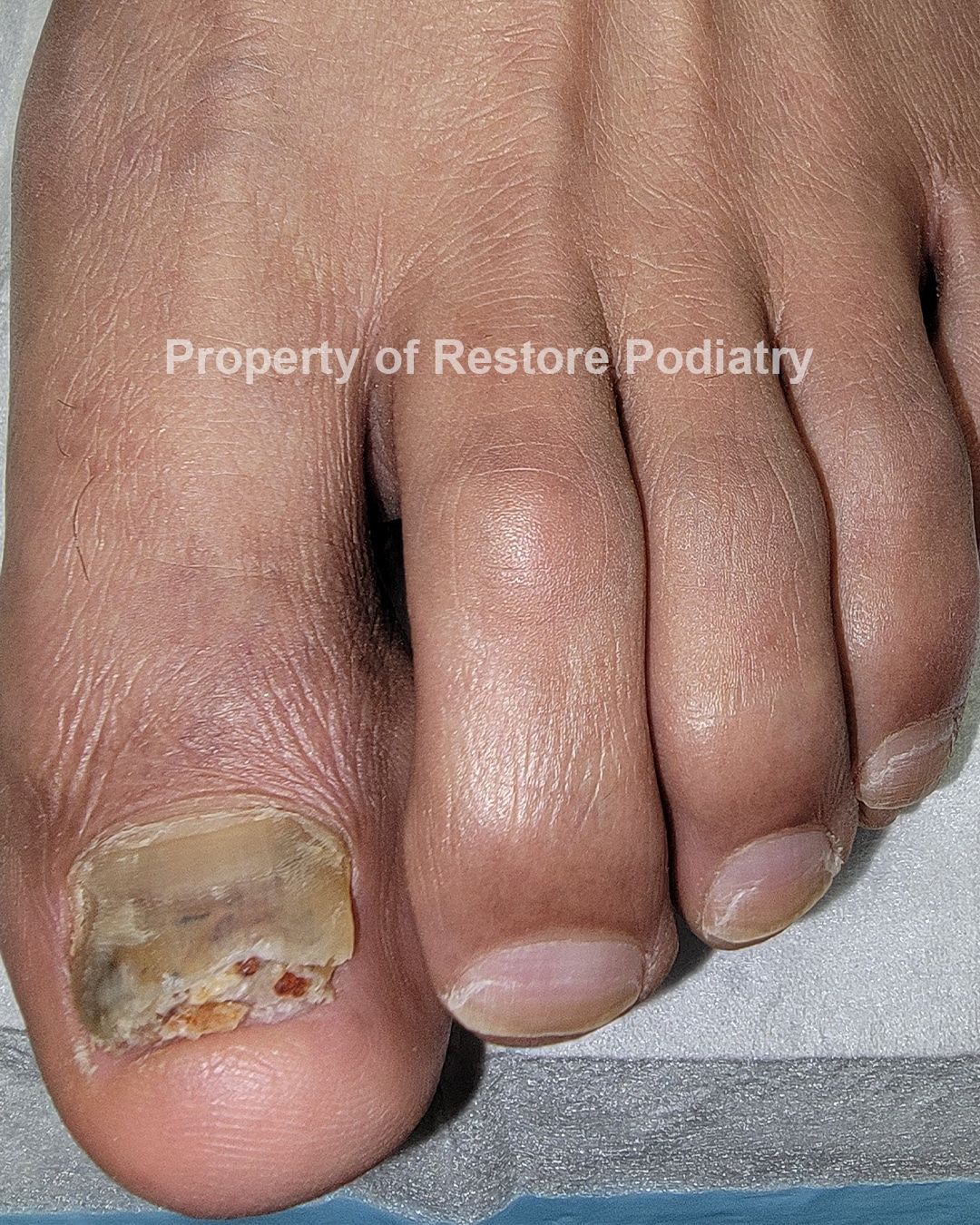

How?: “Sweating Feet From Wearing Boots”
Duration of Infection: 5 Years
Diagnosis: 100% Onychomycosis
Fungal Test Infection: Positive
Treatment Duration: January 2023 – June 2023

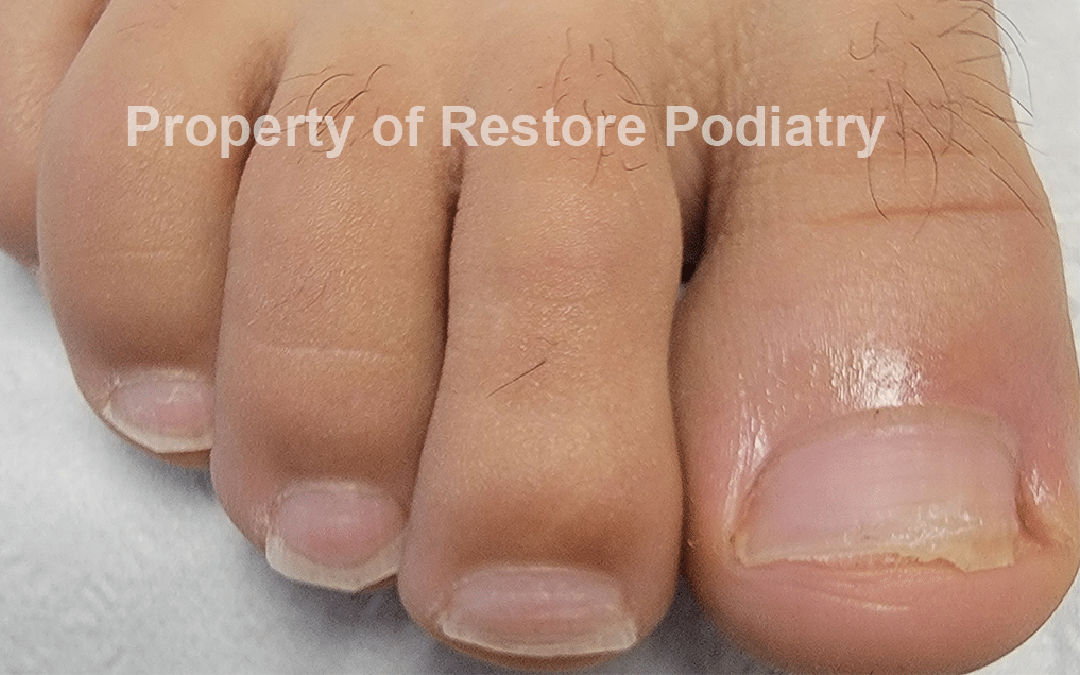
How?: “Damp public places”
Duration of infection: 2 years
If you’ve struggled with persistent toenail fungus or want to avoid the risks of oral antifungal drugs, our wide range of Laser therapy may be a great option. Consult with Restore Podiatry who offers several laser therapy to see if you’re a candidate. There are several types of toenail fungus laser treatment. Laser therapy treatment doesn’t have the side effects, but you might feel a minimal discomfort during the treatment. The procedure usually takes several treatment sessions to remove the toenail fungus completely. Make sure you perform your laser Toenail Fungus treatment with top laser specialist with toenail fungus expert.
Curious about how effective laser treatment can be? Check out our Before & After gallery to see results from real patients.
Book New Patient Special Toenail Fungus Consultation For $150 to determine the best treatment option for your case. Get personalized treatment plans at Restore Podiatry.
Usually, patients require around 3 to 4 sessions, each lasting around 12 minutes to eliminate toenail fungus. This is because the laser energy is usually kept low to ensure safety. However, if these sessions don’t completely eliminate the infection, your doctor might schedule more sessions.
Toenail fungus are typically eliminated after 3 to 4 treatments. After the treatment, your doctor would recommend some techniques to reduce another infection. The chances of being reinfected is high since the fungus is present in the environment.
Laser treatments have low side effects. However, participants of these treatments might feel a warm sensation during the application process.
Have any questions or concerns? Our team at Restore Podiatry is here to help! Reach out to us anytime, and we’ll be happy to assist you with expert advice and personalized care.